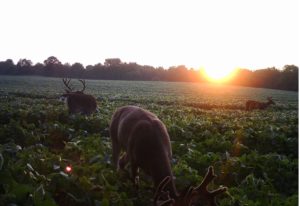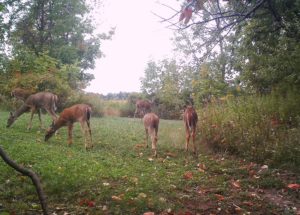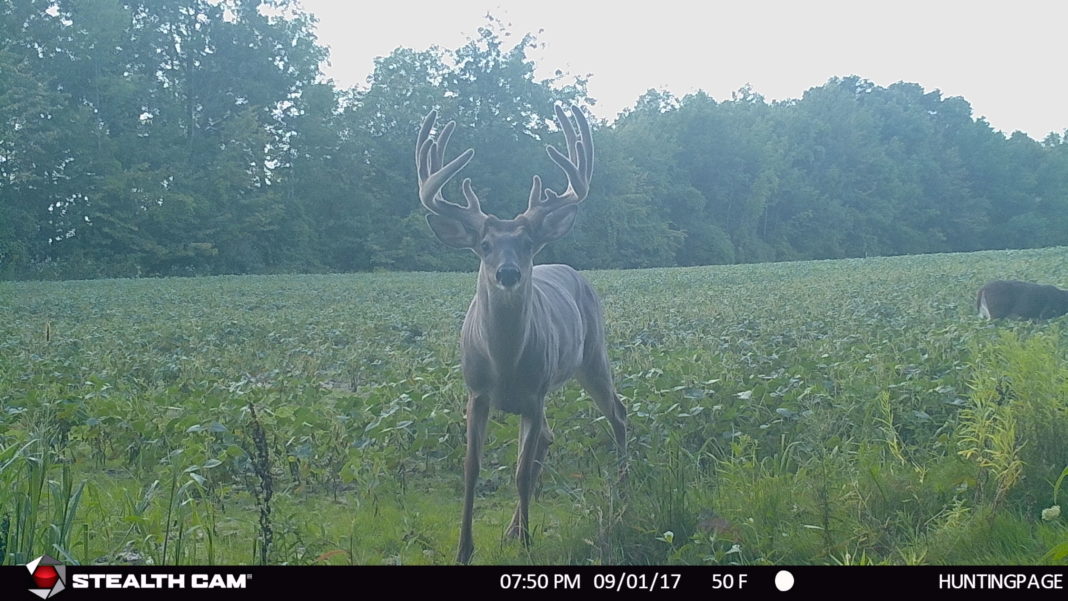Every deer hunter has found themselves in this similar situation: You have a particular buck or group of bucks on your hunting grounds, and you patterned and scouted their habits for much of the summer with hundreds of photos and videos of them. They’ve been showing up in the lower bean fields sometime before dark, or they’ve been feeding every morning in the alfalfa field until about 15 minutes after daylight, or they’ve been crossing a pinch point every afternoon. But as August begins to flip the page and become September, all of a sudden the buck is gone. There has not been any trail camera photos of him in weeks and no more recent sightings. Small bucks and doe family groups dominate the fields where you watched the bachelor group of bucks in early to mid-August.

Developing A Whitetail Playbook
Now is when you get to start your game plan all over again and shift your scouting, try to locate the bucks you want to chase in a few weeks, try to pattern their movements again, and put a plan together for opening day.
During August and early September, whitetails are, of course, the same animals as your late September and October whitetails, but their behavior, personalities, and patterns change dramatically. Some of these behavior changes occur because of changes within their bodies and the weather, some because of changes within their habitat and food sources, and mostly because for the first time in months, humans are intruding his woods.
Once deer begin seeing, smelling, and hearing the presence of humans in the woods, they become alarmed and begin to move to different feeding areas later in the evening, leaving them under the cover of darkness. They also begin using areas farther away from increased activity in their effort to avoid human intrusion.
Whitetails do not know the difference between a hunter, hiker, or person walking their dog in the woods; to them, it is all intrusion. There are times during the hunting season when deer activity will actually increase during the day because of patternable human behavior.
Whitetail Weather Watching
Just like humans, whitetails have certain temperatures, dewpoints, wind chills, and wind speeds in which they prefer to be active. These are the comfort factors that influence daily deer activity.
Once deer grow their winter coats in late August and into early September, high temperatures keep them from traveling very far from bed to feed. They usually wait until the cover of darkness and temperatures to drop to their comfort level before planning their evening excursion.
When temperatures are colder, deer often stay in areas providing protection from the wind. They move to open feeding areas waiting until the daytime temperatures rise, then move during daylight hours, especially on overcast days.
The weather has a profound impact on deer movement throughout the year. Those impacts are never more apparent to deer hunters than during August and September when weather swings occur frequently, swiftly, and at times severe. Whitetails tend to be there one day and gone for ten days.

Not all deer react in the same way to the transitional shift, which makes it difficult to determine the patterns and habits of the bucks you have been watching. Does respond differently than bucks, and older mature bucks respond differently than younger bucks. The movements of both subdominant and dominant bucks change, but they do not change in the same way.



















![The Best Deer Camp Chili [VIDEO] Deer Chili Ingredients, Tomatoes, Chili Spices](/wp-content/uploads/2015/10/Deer-Chili-Deer-Camp-Recipe-218x150.jpg)
![How to Call Elk Early in the Season [VIDEO]](/wp-content/uploads/2016/08/byers003-218x150.jpg)




![Idiots Disturb Hunter: How Would You Have Handled It? [VIDEO]](/wp-content/uploads/2015/10/DSC00110-e1474487693878-100x70.jpg)
![Albino Buck Shocked to Shed His Antlers [VIDEO]](/wp-content/uploads/2015/10/AlbinoDeer-100x70.jpg)